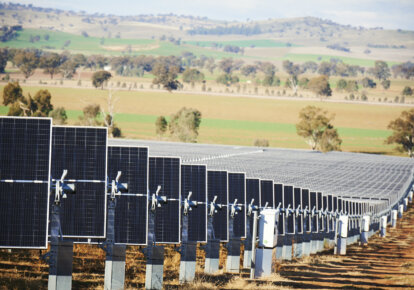August proved to be a month of extremes. The National Electricity Market (NEM) experienced the highest ever daily average price on the 5th of August followed by the lowest ever weekly average price at the end of the month. In both cases, weather and generation availability were the key drivers (which we will explore in this update). As we move into spring, lower prices are expected to continue as renewable generation increases and demand drops alongside mild temperatures.
Electricity price insights
On the 5th, low renewable generation coinciding with cold weather, caused significant price volatility. All mainland NEM states, except Queensland, saw over two hours of very high prices in the morning, and all the mainland states except South Australia saw over 2.5 hours of very high prices in the evening.
It is unusual for all the mainland states to experience very high prices at the same time, as there is usually spare capacity on the interconnectors that can allow generation to be shared between some states. In the event that there is no spare capacity in the interconnector, only the state short on capacity would experience high prices. However on this day, consistent weather conditions across the NEM and outages of 6 coal units and 7 gas units left the whole NEM reliant on expensive backup generation and saw daily average prices exceed $2,000/MWh for VIC and NSW, over $1,000/MWh for QLD and SA, and just below $1,000/MWh for TAS.
If we remove the 5th of August from our analysis, the average price for August would halve in Victoria and be around 40% lower in New South Wales. This highlights the impact of extreme prices on electricity costs and the value of being able to respond to price signals by varying electricity demand.
As we transition from winter into spring, renewable generation typically increases due to spring winds and longer, sunnier days. We saw this play out in August with strong wind conditions driving low prices in the second half of the month. Average wind generation output in Victoria in August was almost twice as high as the low wind months of April and May this year. The average wind generation output in Victoria during the last week of August was also over twice as high compared to the first week of the month. Electricity demand also drops in spring when temperatures become warmer as less electricity is used for heating.
The result of this increased renewable generation combined with lower demand was a week of record low prices. Average prices in Victoria and South Australia in the last week of August were negative, at-$26.35 and -$15.92 respectively – the first time an entire weekly average price has been negative for these states. The average price across the whole NEM was $7.92 for the week.
This capped an exciting month for electricity pricing in the NEM, demonstrating the variability in the system as more renewables come online. For energy users who can adjust their electricity demand or use behind the meter generation and storage, it highlights the opportunities available.
Callide Power Station Unit 4, which exploded in May 2021 causing a loss of power to almost 500,000 Queensland customers, returned to service with its first generation on the 30th of August.
Changes in forward contract prices for CY25
Forward prices for 12-month futures in all mainland regions concluded the month lower than at the end of July.

- New South Wales prices are down 3% from a year ago, and 4% from July 2024
- Queensland prices are up 8% from a year ago, and down 2% from July 2024
- South Australia prices are down 6% from a year ago, and 1% from July 2024
- Victoria prices are down 1% from a year ago, and 5% from July 2024
August 2024 NEM insights by state
New South Wales

- Average spot price of $174/MWh, with 84 hours of negative prices and 14 hours above $300/MWh
- $210/MWh difference in average underlying spot prices at the cheapest and most expensive times of day
- No daily intervals with an average negative price over the whole month
- 32% total renewable generation through the month
- Minimum demand of 4,667 MW
- Peak demand of 11,958 MW
Queensland

- Average spot price of $130/MWh, with 137 hours of negative prices and 15 hours above $300/MWh
- $250/MWh difference between the average underlying prices at the cheapest and most expensive times of day
- Average underlying price was negative from 12:35 PM to 1:05 PM
- 29% total renewable generation through the month
- New minimum demand record of 3,608 MW
- Peak demand of 8,198 MW
South Australia

- Average spot price of $150/MWh, with 243 hours of negative prices and 38 hours above $300/MWh
- $200/MWh difference between the average underlying prices at the cheapest and most expensive times of the day
- No daily intervals with an average negative price over the whole month
- 74% total renewable generation through the month
- Minimum demand of 169 MW
- Peak demand of 2,206 MW
Tasmania

- Average spot price of $129/MWh, with 35 hours of negative prices and 7 hours above $300/MWh
- $150/MWh difference between lowest and highest time-based average underlying spot price
- No daily intervals with an average negative price over the whole month
- 87% total renewable generation through the month
- Minimum record of 1,002 MW
- Peak demand of 1,776 MW
Victoria

- Average spot price of $143/MWh, with 192 hours of negative prices and 11 hours above $300/MWh
- $190/MWh difference between lowest and highest time-based average underlying spot price
- No daily intervals with an average negative price over the whole month
- 40% total renewable generation through the month
- Minimum demand of 2,434 MW
- Peak demand of 8,317 MW
August temperatures
After a cold July across the east coast, August fulfilled the Bureau of Meteorology’s predicted warm winter, with the warmest August on record for the eastern states (and second warmest for WA). The warm weather arrived mid-month, breaking numerous winter maximum temperature records, with the biggest temperature anomalies observed further north.
Despite temperatures exceeding 30 degrees in Queensland, the impact on electricity demand was tempered due to the lack of humidity, making cooling demand manageable with little stress on the system.
Looking ahead to September
Spring conditions look to be well established as we move into September. We expect to see low prices during the daytime when solar is abundant, and extended periods of negative prices during higher wind output.
Minimum demand records are likely to fall during the coming months as the ever-increasing penetration of rooftop solar and lack of heating/cooling demand combine to drive low system demand. Futures pricing for the remainder of Q3 and into Q4 is forecasted to bring a significant drop, particularly for the renewables-heavy states of South Australia and Victoria.
Coal generators are taking advantage of the seasonal drop in demand to undertake required maintenance, with coal generating units at most major coal generators out of service over the coming months. These outages are important to ensure reliability of generation during the coming summer, when hot temperatures can stress the capacity of the system.
Despite the forecasted lower prices, ongoing maintenance of both generating units and transmission lines could cause periods of high price volatility – particularly in the evening peaks or for South Australia where interconnection with the rest of the NEM is weaker.
The Bureau’s climate models remain in a weak “La Niña Watch” indicating that there are signs a La Niña may develop later this year. This would bring cooler than average maximum temperatures across most of mainland Australia (south of the tropics) and increased rainfall. The signals of a La Niña have been weakening, with increasing likelihood of a neutral El Niño–Southern Oscillation event.
Any questions? Our energy specialists are here to help.
If you’re an existing Flow Power customer, don’t hesitate to reach out to your account manager.
If you’re not a Flow Power customer, feel free to contact our friendly team:
1300 08 06 08
Alternatively, you can submit your questions through our website contact form here.














